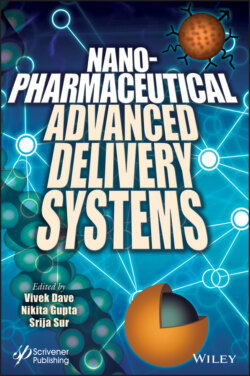Читать книгу Nanopharmaceutical Advanced Delivery Systems - Группа авторов - Страница 42
2.2.1.1 pH-Sensitive Lipid Carriers
ОглавлениеThe pH-sensitive lipid carriers exhibit fusogenic properties under acidic conditions, which are otherwise stable at physiological pH 7.4. This property can be used to destabilize these lipid carriers to release contents intracellularly like delivery of anticancer drugs, antisense oligonucleotides, ribozymes, plasmids, proteins, and peptides to cells in culture or in vivo [31]. Phosphatidylethanolamine (PE) or its derivatives along with compounds containing acidic group (e.g., carboxylic group), which can act as stabilizer at neutral pH, can be used to formulate pH-sensitive lipid carriers. Due to poor hydration of head group of phosphatidylethanolamine containing liposomes, strong intermolecular interactions occur between the amine and phosphate groups of the polar head groups and cell membranes leading to internalization of liposomes through endocytotic pathway. The fusion of pH-sensitive liposomes with the cells prevents intracellular degradation of drug leading to their higher assessment to cytosolic or nuclear targets [32]. Dioleoylphosphatidylethanolamine (DOPE) is used as a major component in pH-sensitive liposomes, which potentiates the process of destabilization of liposomes [33], and thus, when added to liposomes prepared using phosphatidylglycerol (PG), phosphatidylserine (PS), phosphatidylcholine (PC), and cholesteryl hemisuccinate (CHEMS), drugs are delivered intracellularly. Anionic pH-sensitive PE liposomes can be also used to deliver antisense oligonucleotides as they are stable in blood and undergo phase transition at endosomal acidic pH [34]. Similarly, pH-responsive solid lipid nanoparticles and nanostructured lipid carriers can also be formulated for targeted drug delivery [35].
Faster recognition and sequestration of liposomes by phagocytes of reticuloendothelial system (RES) leads to short circulation half-life of these carriers. Also, due to their tendency to accumulate in lysosomes for relatively long periods of time, the encapsulated gets degraded resulting in poor availability at the cytosolic target site. Typically, PEGylation of lipids is done to prevent RES uptake and prolong their circulation time, but this brings down the pH-responsiveness. So, chemical modification of these copolymers by forming conjugates with DOPE for incorporation in pH-responsiveness is being done [36, 37]. pH-sensitive liposome can also be formulated using terminally alkylated N-isopropylacrylamide (NIPAM) [38].
